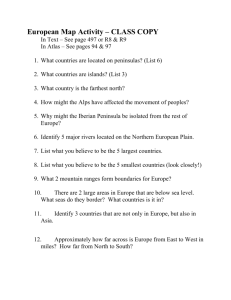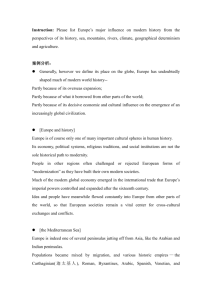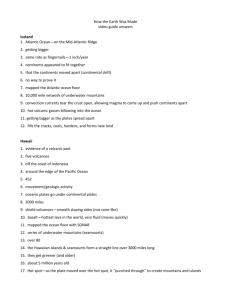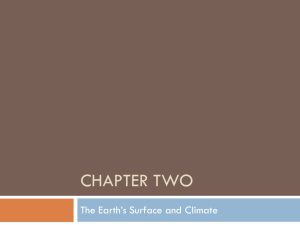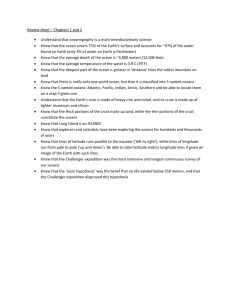The Earth's BIG Features Grade 3 Geography
advertisement
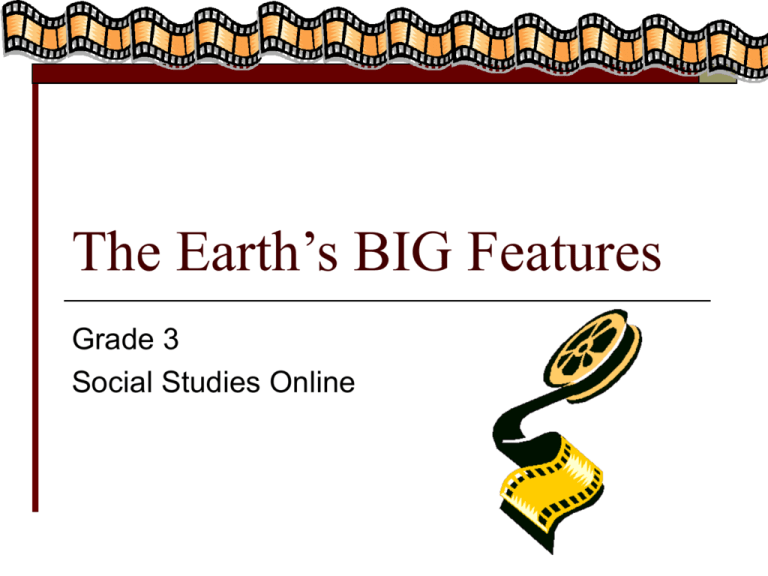
The Earth’s BIG Features Grade 3 Social Studies Online Blueprint Skill Geography Grade 3 Recognize the identifying characteristics of certain geographic features (i.e., peninsula, islands, continents, mountains, rivers, deserts, oceans, and forests). Deserts Approximately one-third of the Earth's land surface is desert. Desert is an area of land that receives very little rain and has very little vegetation . Deserts Deserts can generally be found in low-lying, flat areas where precipitation by rain is blocked by mountain ranges or wind currents that prevent cool wet air from reaching a destination. Deserts Deserts generally are made up of sand or loose dirt. While most deserts appear light brown or tan in color, many can appear red, grey or even green depending on the type of rock that was eroded. Peninsulas When a piece of land extrudes into a body of water and is surrounded by at least three sides, it can be termed a peninsula. Peninsulas In this image, the small piece of land is connected to the main land by a narrow land bridge or isthmus. Peninsulas However, not all peninsulas are shaped in this fashion. Many peninsulas have a triangular shape with a tip out into the water. Islands Islands are pieces of land smaller than continents that are surrounded by a body of water, including oceans, seas, lakes, and rivers. Continents A continent is defined as a large unbroken land mass completely surrounded by water, although in some cases continents are (or were in part) connected by land bridges.. Continents The seven continents are North America, South America, Europe, Asia, Africa, Australia, and Antarctica. The United States is located in North America. Mountains Over long periods of time, mountains are created by tremendous forces in the earth with a steep top usually shaped up to a peak or ridge. Mountains occur more often in oceans than on land. Some islands are the peaks of mountains coming out of the water. Mountains Mountains are formed by volcanism, erosion, and disturbances or uplift in the earth's crust. Most geologists believe that the majority of mountains are formed by geological forces heat and pressure producing changes under the earth's crust and movements in the earth's crust. Mountains and pressure producing changes under the earth's crust and movements in the earth's crust. Rivers and Streams Rivers? Streams? Creeks? They are all names for water flowing on the Earth's surface. As far as the Water Science site is concerned, they are pretty much interchangeable. Rivers and Streams I tend to think of creeks as the smallest of the three, with streams being in the middle, and rivers being the largest. Oceans Oceans are the largest bodies of water in the world. Ocean water is saltwater, and covers three fourths of the earth’s surface. Oceans The world has four oceans, named the Atlantic Ocean, Pacific Ocean, Indian Ocean, and Artic Ocean. Ed. World: An Ocean of Activities. Resources What Is a Desert? NASA Landformations: Deserts NASA Landformations: Peninsula History of Ellis Island NASA Landformations: Islands The Continents World Atlas.com Resources Mountains: Face of the Earth The Evergreen Project: River and Stream Topics Water Science for School What’s It Like Where You Live? Comparing Communities Education’s World: An Ocean of Activities Resources The Ocean Biome
